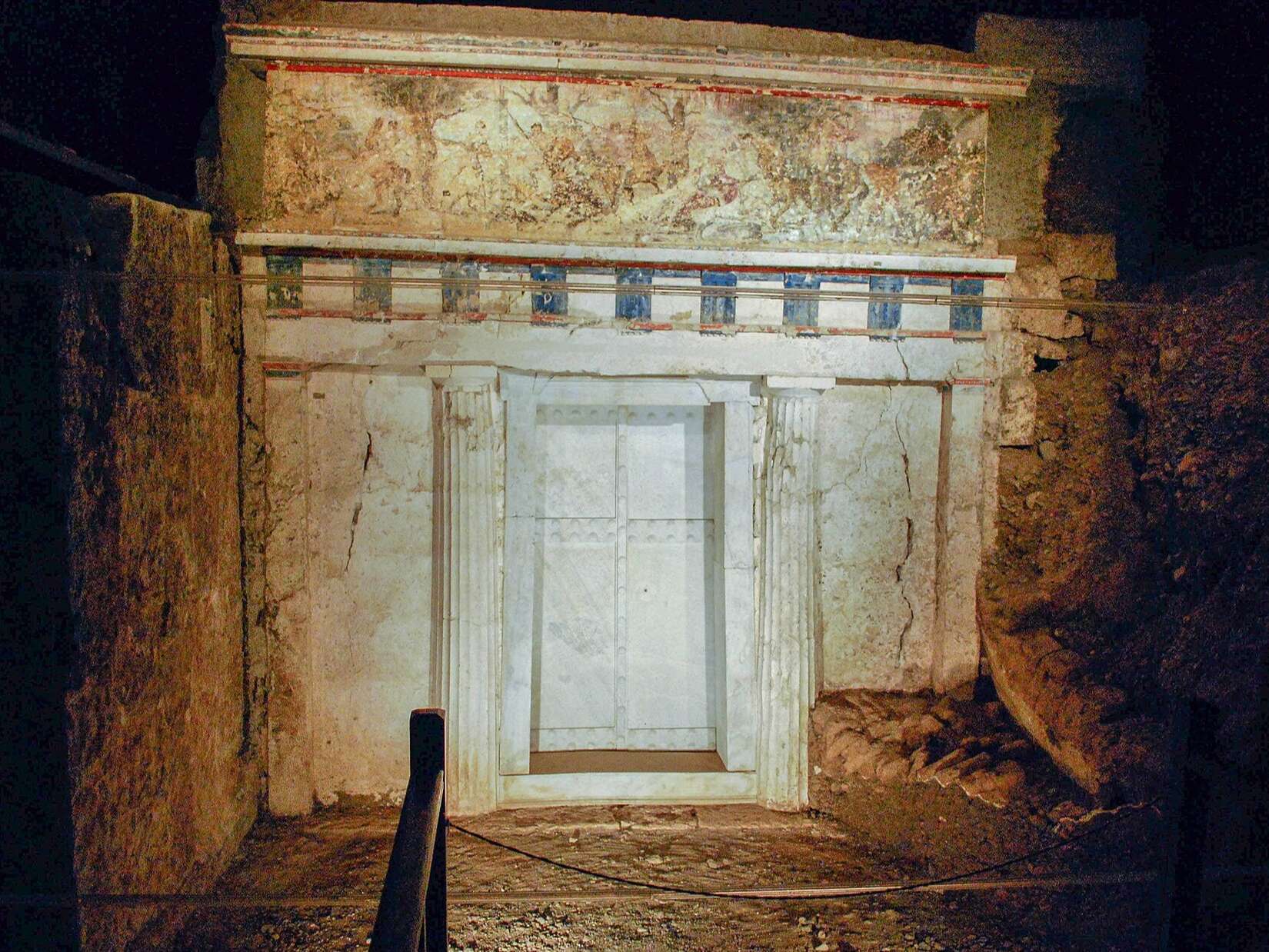

A recent study published in the Journal of Archaeological Science: Reports reintroduces the debate surrounding the final resting place of Philip II of Macedon, the father of Alexander the Great, by scrutinizing the skeletal and contextual evidence of the Vergina tombs’ (Tomb I and Tomb II) occupants.
It is argued that some of the most influential claims related to the identities of the individuals interred in the tombs are scientifically and methodologically unsustainable, and especially questionable now is the idea that Tomb I may house Philip II.
The discovery of the royal tombs—Tomb II being among them—beneath the Great Tumulus at Aigai (modern Vergina) in 1977 fundamentally reshaped the history of ancient Macedonia. Tomb II was found to be lavishly furnished and untouched by looters. It was quickly hailed as the resting place of Philip II, the father of Alexander the Great. Yet, despite initial scholarly consensus, this has since become one of the most contested theories in classical archaeology.
The primary argument in favor of Tomb II housing Philip II has long centered on the physical trauma observed in the male skeleton. A fused tibia consistent with a severe leg injury and a skull exhibiting trauma near the right eye socket are apparent. These injuries correlate strikingly with historical accounts. Philip is known to have lost an eye to an arrow and suffered a significant leg wound during his lifetime.
Moreover, the regalia buried alongside the remains included a golden larnax adorned with the Vergina Sun, ceremonial armor, and a royal diadem. These items align with expectations for a Macedonian king of Philip’s stature. The discovery of a similarly adorned female in the antechamber, possibly one of Philip’s wives, further strengthened the theory. She is commonly thought to be Cleopatra Eurydice.
Despite these apparent correlations, a controversial 2015 study led by Antonis Bartsiokas reanalyzed the skeletal remains in Tomb I, leading the authors to identify pathological features. In particular, they noted knee stiffness (ankylosis) that they argued more convincingly matched the historical record of Philip II’s injuries.
The authors suggested that Tomb II likely contained the remains of Philip III Arrhidaeus, Alexander’s half-brother and successor, and his wife Eurydice II. This argument gained traction due to the relative youth of the female remains in Tomb II. It was determined that she was around eighteen years old at death, which could be a likely match for Eurydice II. Additionally, the elaborate burial could reflect the posthumous royal honors bestowed upon Philip III and Eurydice during the turbulent succession crisis after Alexander’s death.

The new study takes aim at the methodological basis of these earlier reinterpretations. In particular, it questions the reliability of linking specific skeletal traits to historical figures given the variability in trauma healing and fossilization processes. The general lack of individualized bone profiles for ancient Macedonian royals also complicates identification. The researchers emphasize that many previous assertions on matching injuries or diseases rely on circular reasoning and are based on only selective and hence insufficient readings of archaeological data.
It is argued that the physical evidence from Tomb I does not support the conclusion that its occupants were Philip II and Cleopatra Eurydice. This is especially true when considering the poor preservation of the tomb. The secondary disturbance of the tomb further complicates the matter. Instead, it is reaffirmed that Tomb II remains the most plausible candidate for Philip II’s burial due to its funerary context and artifact assemblage. However, the authors of the study stop short of issuing a definitive identification.

The question of who lies buried in the royal tombs of Vergina speaks to broader issues in the interpretation of elite burials in antiquity. It highlights the challenge of matching archaeological data with historical texts. This is especially so in a context in which dynastic narratives were often shaped by politics, propaganda, and retroactive myth-making.
While the identification of Tomb II as Philip II’s final resting place remains compelling, it is far from settled. The newest contribution to the debate urges caution in making hasty speculations, as the evidence reminds scholars to weigh it not only in terms of likelihood but to also draw on previously established concrete facts.
In that sense, the royal tombs of Vergina are as much about the present as they are about the past. They are a case study in how archaeology and historiography intersect, as well as how modern narratives continue to shape our understanding of ancient power.
